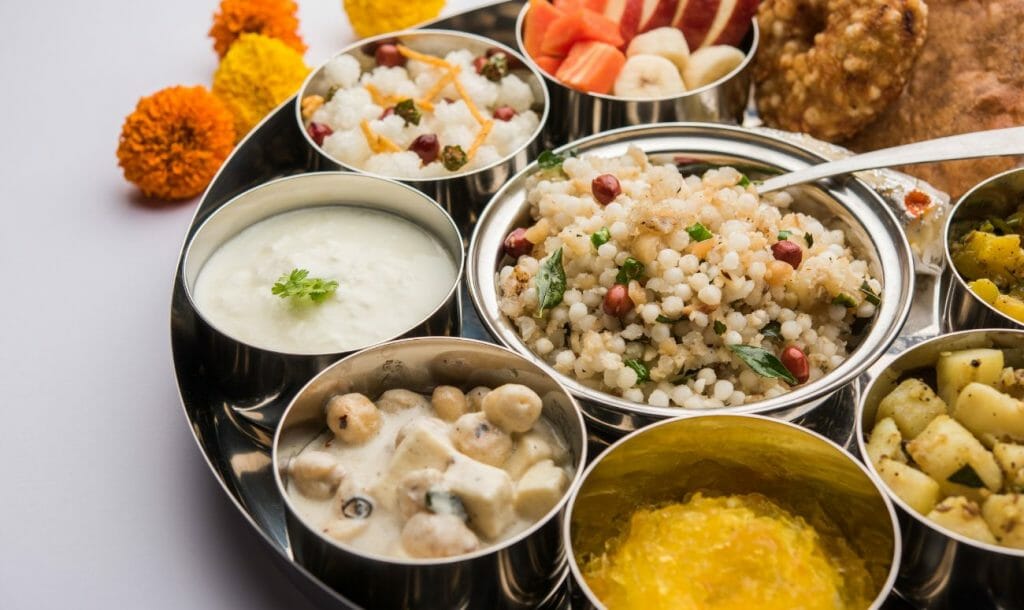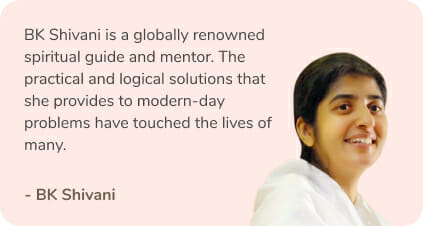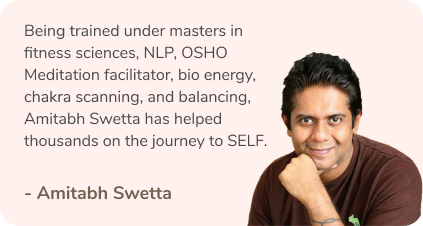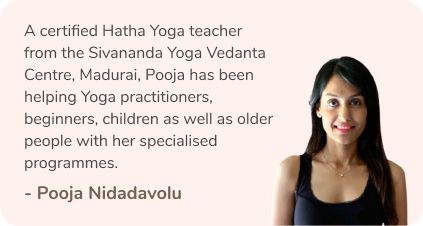Navratri is an auspicious Hindu festival that occurs four times in a year. Sharada Navratri which falls during autumn is the most celebrated of them all. Navratri is a festival celebrated in honour of Goddess Durga. As the name goes, Navratri (nav = nine and ratri = nights) spans over nine nights and the tenth day is celebrated as Dusshera. The nine different manifestations of Goddess Durga are worshipped during Navratri. Based on individual beliefs, people offer prayers, prasad and observe fasts to express their devotion to the Holy Mother.
Significance of Fasting During Navratri
There is a scientific logic that prevails behind the ritual of fasting during Navratri. Sharada Navratri falls around the autumn equinox in the months of September-October. This is the time when the season changes and temperatures start to dip. The human body especially the digestive system needs to adapt itself to the seasonal change and it needs to detoxify itself for better functioning. The best way to do this is by fasting and abstaining from certain kind of food items. This process cleanses the digestive system and improves its functioning and the overall immunity of an individual.
Different Types of Fasts Observed During Navratri
Fasting during Navratri is considered auspicious and is done by both men and women. Some observe complete fasting while some observe a partial fast. Usually, complete fasting means having only fruits throughout the nine days and partial fasting means having only one meal in the evening after performing puja.
Must-Read: 6 Types of Fasting & How They Impact Your Body?
The number of days for which people observe fasting varies depending on the community, region, age and health issues. Some observe a fast for all nine days while others observe it for 2, 7 or 8 days.
A majority of devotees break their fast on Ashtami, the eighth day of Navratri. On this day, nine girls who are considered to be a form of Goddess Durga are worshipped. Their feet are washed by the person who is fasting and then they are fed a meal comprising of chana, poori and halwa. These nine girls then bless the devotees, after which they break their fast.
What are the Fasting Rules to be Followed?
As per the ancient texts of ‘Navratri vrat katha’, fasting during the Navratri days helps one elevate their mind and body. This can be achieved by consuming food items that are easy to digest and provide a break from the regular dietary routine. All food items that fall under the tamasic category should be strictly avoided as they overload the digestive system and slow down the detoxification process. The amount of food consumed during these nine days should be in moderation making it easy for digestion and absorption.
What Can You Eat and What Can You Not Eat During Navratri Fasting?
The basic principle behind Navratri fasting is about eating right and light food while fasting. This puts less pressure on the digestive process and helps the senses stay active. Food consumed should be rich in fibre and protein to provide the required energy. Plenty of liquids should be consumed to stay hydrated and enhance the detoxification process.
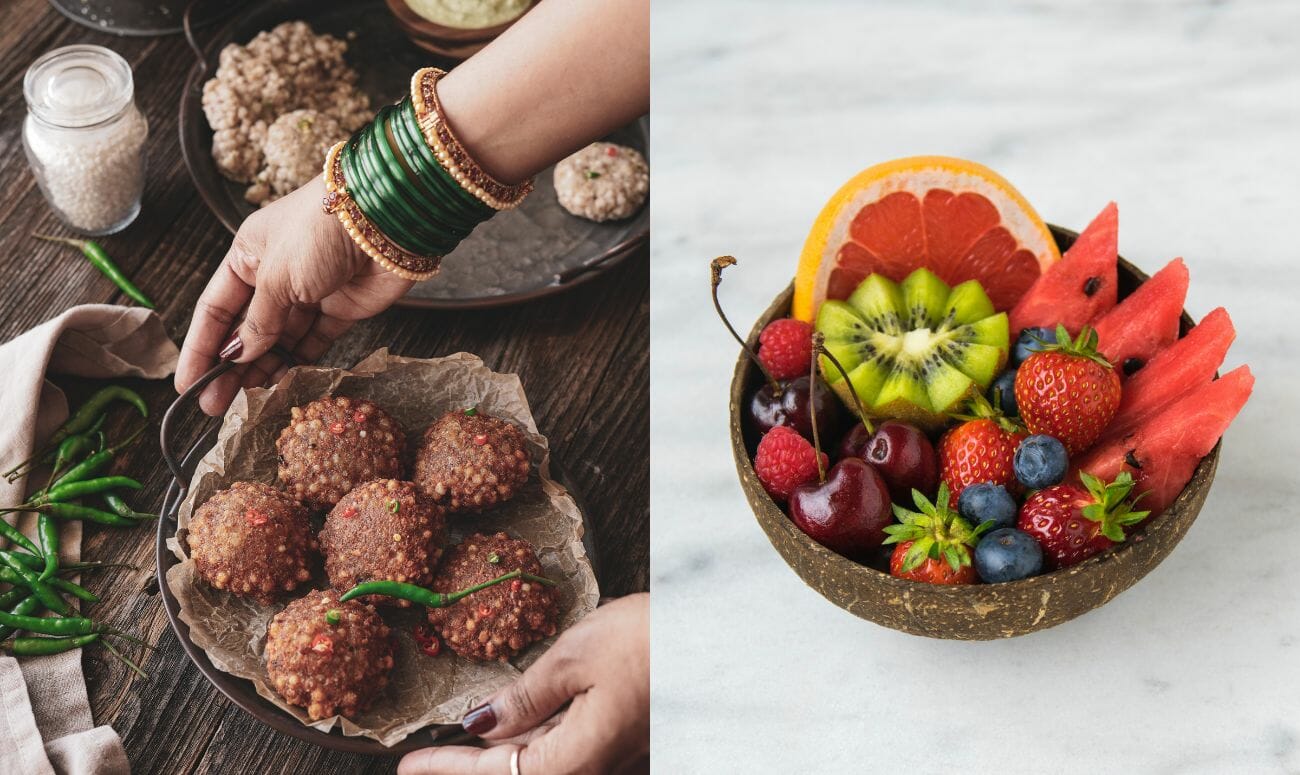
Food Items Allowed
- Kuttu ka atta (buckwheat flour) can be used to make poori, paratha and dhokla.
- Singhare ka atta (water chestnut flour) is the best substitute for regular atta to make halwa.
- Rajgira (amaranth) can be used to make poori, kheer, kadhi and thalipeeth.
- Sama ke chawal (barnyard millet) can be used as a substitute for rice to make uttapam, dosa, idli, pulao and khichdi.
- Sabudana (sago) is used to make vada and khichdi.
- Spices that are allowed include black pepper powder, cardamom, cinnamon, nutmeg, cloves, anardana, ginger, green chillies, ajwain (carom seeds) and amchur.
- Sendha namak (rock salt) is used instead of normal salt.
- Vegetables that are allowed include sweet potatoes, potatoes, arbi (colocasia), suran (yam), pumpkin, raw banana and tomatoes.
- Fruits and dried fruits are allowed during fasting. They can be used to make sweets and milk shakes.
- Milk and milk products including milk tea are allowed and should be had during fasting.
- Ghee is allowed during fasting and should be used as far as possible instead of oil.
Must-Read: Using Rajgira Beyond Fasting – Top 5 Healthy And Unusual Rajgira Recipes
Food Items NOT Allowed
- Grains consumed regularly like rice and wheat are not allowed.
- Flours made from rice, wheat or chickpeas are not permitted during fasting as they contain gluten.
- No lentils or legumes are allowed as they are difficult to digest.
- Spices like hing (asafoetida), haldi (turmeric), garam masala, methi (fenugreek), mustard and coriander powder are not allowed because they are considered to increase the heat in the body.
- Common salt is not allowed because it is artificially processed and may contain trace amounts of chemicals.
- Vegetables like onion and garlic are prohibited because they are tamasic in nature.
- Coffee is not allowed during fasting.
Dr. Deepali Kampani is a digital content specialist who weaves health and food through her pen.
Read More: How to Centre a Wandering Mind with Focus Meditation?
Like & Follow ThinkRight.me on Facebook, Instagram, Twitter, Pinterest and Telegram to stay connected
